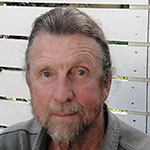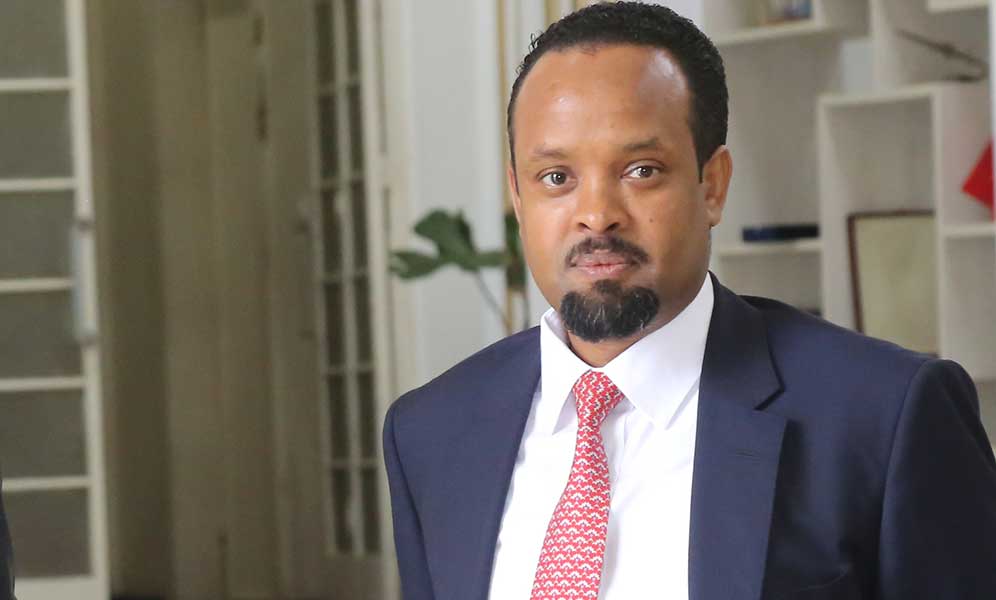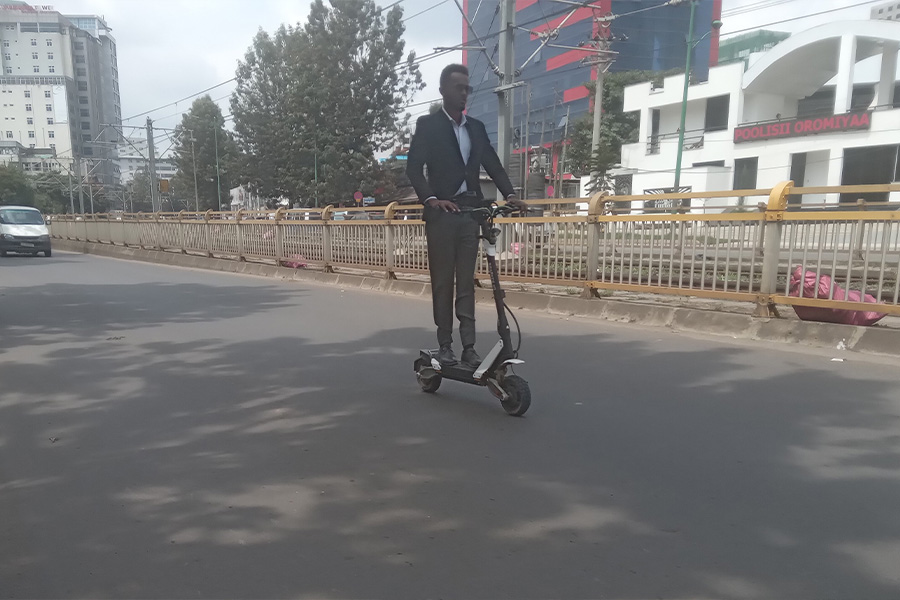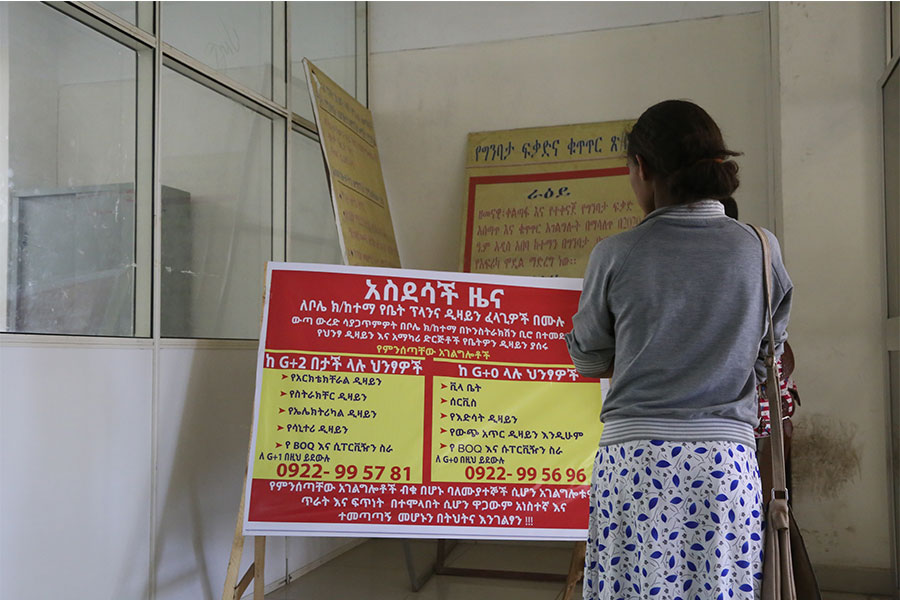
Sunday with Eden | Sep 04,2021
Jan 3 , 2021
By Michael Street
Holistic development of Ethiopia’s river basins by geographical communities offers the best hope for unity, prosperity and peace. Ethiopia is well-qualified and has a unique opportunity to make this happen, writes Michael Street (greenexplorersafrica@gmail.com), who first visited Ethiopia in 1975, has lectured widely on the region, and is currently working on river basin regeneration in Sicily, Italy. This is an extended version of a letter to The Financial Times, "Why Ethiopia's rivers offer the best hope for peace."
The ethnonationalism that threatens to tear Ethiopia apart and destabilise the Horn of Africa is a relatively recent phenomenon having grown out of the anti-imperial student movements of the 1960s, multiplied with the coming of the military dictatorship in the 1970s and given legitimacy in the 1995 federal Constitution.
“Geographical community is [still] a much more salient source of identity and object of loyalty for the highlanders than an ethnic or clan affiliation,” writes Ketjil Tronvoll (Prof.) of Oslo University in "War and the Politics of Identity in Ethiopia".
The rallying cry and slogan for the first uprising in Tigray province in the 1940s, adopted decades later by the Tigrayan Peoples Liberation Front (TPLF), expresses this geographical source of identity: Arriena gereb– “We have united around our rivers.”
With political solutions to Ethiopia’s complex ethnic problems receding and military options unsustainable, Prime Minister Abiy Ahmed’s (PhD) best hope for uniting Ethiopians around his vision of Medemer, which means among others things "coming together," is to regenerate Ethiopia’s geographical communities as sources of identity and objects of loyalty. Rivers and river basins are good places to start.
A river basin is an area of land drained by a river and its tributaries. They are geographical units with clearly defined boundaries that cut across ethnic lines. River basins are one of nature’s most dynamic and complete ecosystems where everything - humans, plants, soils, animals, water-courses – is connected and interdependent and where nature-based solutions to complex challenges can be found. Around the world, river basins are being developed as "living laboratories" for the Sustainable Development Goals across national and sub-national scales.
In Ethiopia, river basins offer a geographical framework for developing a systemic and holistic approach to sustainable development, administration and governance while tackling the triple challenges of climate change, ecological degradation and biodiversity loss. Integrated River Basin Management (IRBM) can revive collaboration between geographical communities that share common water resources, as they have done in Ethiopia for millennia. Collaboration between river basin communities of different ethnic backgrounds can uncover, or rediscover, qualities and benefits that divided communities cannot attain or enjoy.
Medemer“is about creating something greater than the sum of its parts,” writes Linda Yohannesin in her review of the Prime Minister’s book where he defines his vision. This also sums up the main aim of IRBM. More than ever, this is what Ethiopia needs to find unity, peace and prosperity.
Surrounded by deserts, the Ethiopian highlands and their fertile lowlands have been described as an "island in a dry land sea." This "island" is drained by 12 major river basins in which Ethiopia’s 110 million people live. If Ethiopia is the "Land of Origins," these river basins have nurtured (and have been nurtured by) geographical communities longer than anywhere on earth.
In 1991, when a coalition of rebel forces removed the Derguefrom power, Ethiopia’s river basins were among the least known on earth and their people among the most isolated. Approaching the lowland basins with a view to development, the late Prime Minister Meles Zenawi said, “We went in there blind.”
In less than three decades, thanks to a combination of infrastructure development, communications technology and the commitment of countless individuals, these last frontiers and their remote people have been opened up to the world.
Ethiopian and international scientists, scholars, professionals, writers, travelers, photographers, filmmakers and map makers have been exploring every corner of Ethiopia’s remote river basins and their reports, studies, books, maps, articles and films are readily available. Everything needed to develop Ethiopia’s river basins holistically - knowledge, information, technologies and skills - is there.
Ethiopia’s three Prime Ministers since 1991 have been instrumental in this. They have been committed to the protection and restoration of the country’s fragile and vulnerable environment, and each has pioneered initiatives that put them among Africa’s leading green thinkers. During the past three decades, the idea of a more holistic and systemic view of developing Ethiopia’s river basins, as opposed to the linear or "mechanistic" model of the 20th century, has been evolving.
The late Meles Zenawi started the process with his speech at the historic Lem (Green) Meeting in Addis Abeba in June 1992, held to coincide with the UN's first "Earth Summit" in Brazil. Throughout Africa, the centrally planned post-colonial development model based on large-scale individual projects – dams, farms, sugar enterprises - had failed. New models for sustainable and integrated development were being explored.
In the spirit of the day, Meles condemned the “top-down” and “irresponsible” development model of the previous regimes and called instead for "conservation-based, people-led, people-centred” development requiring “a multi-disciplinary, broad-spectrum approach, for there are no piecemeal solutions to the problems at hand.”
Twenty years later Ethiopia was a leader in ecological restoration and green growth initiatives, Meles was Africa’s climate diplomat and his ground-breaking Climate Resilient Green Economy strategy was launched in 2011, a year before his death.
Former Prime Minister Hailemariam Desalegn took the green baton from Meles and expanded his vision, institutionalising the CRGE strategy and creating the conditions on the ground for implementation including countrywide plans for integrated river basin development, as well as establishing the River Basins & Green Areas Agency in 2016.
Under Prime Minister Hailemariam’s leadership, river basin awareness grew considerably, including an innovative systems approach to water security in the Awash River Basin known as Integrated Water Resources Management. By the time of his resignation in 2018, Ethiopia was standing “at the top of least developed countries in terms of commitment, engagement and awareness,” according to the Global Green Growth Institute.
Hailemariam, who has a master’s degree in sanitation engineering and served as a dean of the Ethiopia Water Technology Institute for 13 years, continues to be an influential green voice in Africa through his advocacy with institutions such as The Brenthurst Foundation, a South African think tank.
Abiy Ahmed has taken Ethiopia’s green vision even further.
Launched in July 2019, his Green Legacy Initiative (GLI) “ is a national go-green campaign, endeavouring to raise the public’s awareness about Ethiopia’s frightening environmental degradation and educate society on the importance of adopting green behaviour.”
Aimed to counter the effects of deforestation, climate change and biodiversity loss, the GLI kicked off with a world record-breaking 350 million trees planted in 12 hours, with billions more planted since, according to the Office of the Prime Minister. This effort confirms Ethiopia’s legendary ability to mobilise and motivate large numbers of people (up to 23 million for the tree planting) around a common cause and shows that Ethiopia’s geographical communities are intact and engaged.
Also part of the GLI, on the upper tributaries of the Awash River, the Prime Minister has reinvigorated the Addis Abeba River & Riversides Development Project, a green urban scheme which has the potential to inspire Addis citizens to follow the river downstream and take this green thinking with them.
Despite the huge ecological restoration work being done in Ethiopia, the urgency to expand and spread this work cannot be overestimated.
Ethiopia’s 12 major river basins are being rapidly degraded by climate change, deforestation and biodiversity loss with potentially devastating consequences for Ethiopia’s 110 million population, expected to reach over 200 million by 2050.
The surrounding deserts are expanding and the "island in a dry land sea" is shrinking. Ethiopia loses an estimated 2 billion tonnes of topsoil every year, a loss of natural capital no amount of gross domestic product can recover. While Ethiopia loses its natural capital at an alarming rate, its debt burden is becoming unsustainable and according to the International Monetary Fund (IMF) is “at high risk of external and overall distress.”
On top of this, the Prime Minister has inherited billions of dollars worth of climate-vulnerable and water-intensive mega projects – dams, farms, sugar enterprises - that have created most of this debt. Situated mostly in the lowland river basins, these controversial projects based on 20th-century mechanistic thinking, like those of the post-colonial era, have a limited guarantee of success.
Depending on how they are managed, these piecemeal mega projects have the potential to transform Ethiopia into a green and prosperous middle-income country in the coming decade, or to become a new generation of white elephants that will bankrupt the country and create conflict on all the major rivers.
This is a danger that can cancel out the successes that have been achieved so far. In the past three decades, Ethiopia has been transformed from what amounted to a failed state to one of the fastest-growing economies in the world, making great advances across environmental, social and governance (ESG) indicators. This ancient land is on the threshold of a renaissance that would be good for Africa and good for the world.
Ethiopia is also at an inflexion point, with unique challenges to overcome for the Prime Minister’s vision of Medemer to become a reality. At the same time, there is also a unique opportunity for Ethiopians to demonstrate how their vision to green this "island in a dry land sea" can not only bring unity, peace and prosperity to the country but also stabilise the Horn of Africa and inspire those beyond.
Ethiopia’s inflexion point coincides with that of the planet, where every country faces multiple and shared challenges – social, economic, environmental. It is clear that business or development as usual is no longer an option. The pandemic is a clear warning that we cannot destroy nature to generate economic growth, as we have been doing, without nature biting back.
These inflexion points also coincide with the 2021-2030 United Nations Decade for Ecosystem Restoration, a global campaign that “challenges everyone to massively scale-up restoration efforts that breathe new life into our degraded ecosystems.”
Ethiopia’s degraded river basins are ecosystems on a grand scale (the Blue Nile Basin is larger in size than Norway) that require nothing less than a global effort to restore. Such an effort in Ethiopia could play a leading role in Africa’s green recovery.
“If Covid-19 is not beaten in Africa, it will come back to haunt us all,” the Prime Minister wrote in The Financial Timesin March, as a warning to the rest of the world. The same could be said of the global economic crisis caused by Covid-19. Rich countries are committing trillions of dollars toward a green recovery that will “not only reduce the vulnerability of communities to pandemics and improve resilience, but have the potential to boost economic activity, generate income, create jobs, and reduce inequalities,” according to the OECD.
But unless a green and inclusive recovery is stimulated across all countries, especially in Africa, the old "brown" economy will continue to dominate those countries and may come back to haunt us all.
This puts Ethiopians in a unique position to show the world how, over the past three decades, they have gained the knowledge and experience of their enormous river basins to create new models of holistic and sustainable development based on the whole-system approach rather than the fragmented, piecemeal methods of the 20th century.
They can show how their once rich and productive river basins can become living laboratories for new forms of collaboration between geographical communities of different ethnic backgrounds and how a skilful combination of top-down and bottom-up decision-making can reconnect Ethiopia’s nature with its people and its economy.
They can show how an integrated green recovery in each of Ethiopia’s 12 major river basins can reveal their interconnectedness and generate Medemer, where the whole is clearly greater than the sum of its parts. It all starts with a river basin.
PUBLISHED ON
Jan 03,2021 [ VOL
21 , NO
1079]


Sunday with Eden | Sep 04,2021

Radar | Feb 22,2020

Fortune News | Nov 16,2024

Viewpoints | Jun 14,2025

Viewpoints | Oct 21,2023

In-Picture | Oct 12,2024

Viewpoints | Apr 15,2023

Commentaries | Jan 07,2024

Commentaries | Jun 08,2019

Featured | Jan 26,2019

My Opinion | 131983 Views | Aug 14,2021

My Opinion | 128372 Views | Aug 21,2021

My Opinion | 126309 Views | Sep 10,2021

My Opinion | 123927 Views | Aug 07,2021

Dec 22 , 2024 . By TIZITA SHEWAFERAW
Charged with transforming colossal state-owned enterprises into modern and competitiv...

Aug 18 , 2024 . By AKSAH ITALO
Although predictable Yonas Zerihun's job in the ride-hailing service is not immune to...

Jul 28 , 2024 . By TIZITA SHEWAFERAW
Unhabitual, perhaps too many, Samuel Gebreyohannes, 38, used to occasionally enjoy a couple of beers at breakfast. However, he recently swit...

Jul 13 , 2024 . By AKSAH ITALO
Investors who rely on tractors, trucks, and field vehicles for commuting, transporting commodities, and f...

Jul 5 , 2025
Six years ago, Ethiopia was the darling of international liberal commentators. A year...

Jun 28 , 2025
Meseret Damtie, the assertive auditor general, has never been shy about naming names...

Jun 21 , 2025
A well-worn adage says, “Budget is not destiny, but it is direction.” Examining t...

Jun 14 , 2025
Yet again, the Horn of Africa is bracing for trouble. A region already frayed by wars...

Jul 6 , 2025 . By BEZAWIT HULUAGER
The federal legislature gave Prime Minister Abiy Ahmed (PhD) what he wanted: a 1.9 tr...

Jul 6 , 2025 . By YITBAREK GETACHEW
In a city rising skyward at breakneck speed, a reckoning has arrived. Authorities in...

Jul 6 , 2025 . By NAHOM AYELE
A landmark directive from the Ministry of Finance signals a paradigm shift in the cou...

Jul 6 , 2025 . By NAHOM AYELE
Awash Bank has announced plans to establish a dedicated investment banking subsidiary...